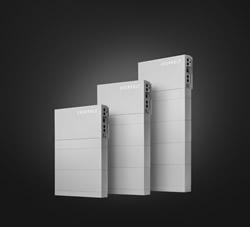SolarBOS was the first company to build a combiner box around a flexible platform where the system integrator could specify the number of fuses and enclosure rating. While this seems pretty simple in hindsight, back in 2004 this was brand new and allowed integrators a lot of flexibility on the design of the DC side of the project.
Balance of System Solar Solutions
Jason Schripsema | Solar BOS
1 – Can you describe some of the new innovations SolarBOS has been responsible for in the balance of system space?
SolarBOS was the first company to build a combiner box around a flexible platform where the system integrator could specify the number of fuses and enclosure rating. While this seems pretty simple in hindsight, back in 2004 this was brand new and allowed integrators a lot of flexibility on the design of the DC side of the project. More recently, SolarBOS was the first to introduce a combiner box with a built-in disconnect switch, as well as the first to introduce a combiner with an automatic shut-off for roof-top projects.
2 - Which products specifically have you developed in the past year? Why are they advantageous?
The most recent product is a combiner box that automatically disconnects the output conductors in the event of a power failure in the building. This is advantages for fire fighting personnel, because all they need to do is kill power to the building and all the conductors running from the roof to the inverter become de-energized - which means they can fight a fire the best way they know how without having to worry about cutting through a live conduit. It's also useful in the clean-up phase of firefighting when they open up parts of the building to inspect for damage.
3- Which product range is growing the fastest?
I would have to say our line of smart sub-array combiners (re-combiners) has really gained a lot of traction this year. It seems that integrators in North America have adopted a "zone monitoring" approach to PV systems, and rather than monitor each string, they prefer to monitoring the input to each fuse at the sub-array level.
4- Which part of the country is providing the majority of your business?
I would say half of our business is still California. We've seen a lot of business in New Jersey, and a lot of growth in Arizona, New Mexico and Texas.
5 - What size are the projects that you are mainly seeing (small residential, mid size commercial etc)?
We see a lot of projects in the 50 kW to 5 MW range. That seems to be the bulk of our business these days.
6 – How do you come up with new product ideas?
We try to engage our customers and ask them what it is they really need. You'd be surprised, but if you ask someone what would really help them out, they'll often have a list of things. The string checker is a good example of this. We had a customer come to our booth at Solar Power 2009 and ask if we had any tricks up our sleeve that would let them measure current in a string safely before they connected the string to the combiner box.
7 – What are some of the challenges in developing, certifying or testing new products before releasing them? How do you approach the process of product design and development?
The biggest challenge is making time for new product development and along with that, determining which products we should be focusing our time and resources on. After that, the next big challenge is real-world reliability testing. We have a small array on the roof of SolarBOS' facility, but that will only let us test one or two new products at a time. Finding a nice 200 or 300 kW array where we can install a dozen or more beta units is a real trick.
8 – What new products are due out in 2010? Why do you think solar installers will be interested in them?
We have two new products due out in early 2011 that I think our customers will find interesting. We'll have a fused cable assembly solution that should save our thin film integrators a lot of money, plus a combiner solution that will meet the new arc-fault requirements of the 2011 NEC. I'm looking forward to getting both of these into production next year.
The content & opinions in this article are the author’s and do not necessarily represent the views of AltEnergyMag
Comments (0)
This post does not have any comments. Be the first to leave a comment below.
Featured Product

EVERVOLT home battery storage: Standby power with or without solar
Renewable energy stored in an EVERVOLT home battery system is the perfect backup plan against an uncertain utility grid and weather events. Run key appliances longer and live life when the unexpected happens. EVERVOLT battery storage systems are covered by a complete 12-year warranty from Panasonic.
